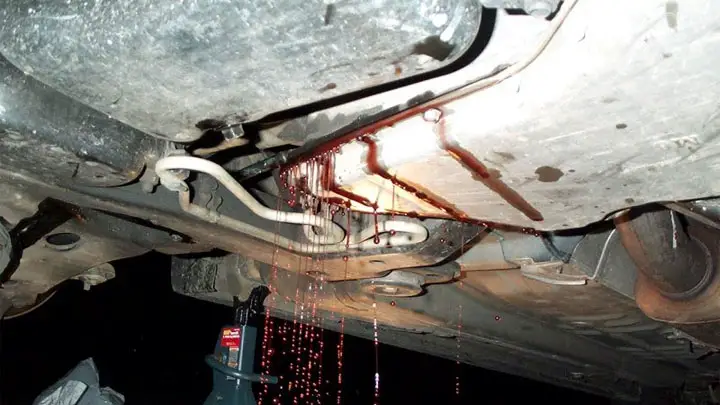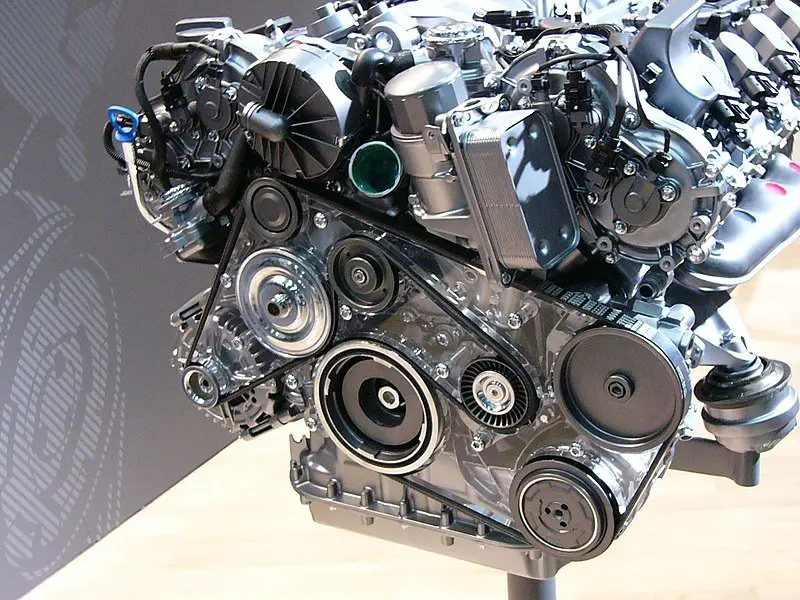Few automotive issues are as disconcerting as discovering an oil leak between engine and transmission of your vehicle. This can lead to a messy garage floor and raise concerns about potential damage to your engine and transmission components. In this comprehensive guide, we will walk you through the causes, signs, and step-by-step instructions on how to fix an oil leak between the engine and transmission. Whether you’re a seasoned DIY mechanic or a novice car owner, we’ve covered you with detailed insights and practical advice.
Understanding the Oil leak between the engine and transmission

Before we dive into the solution, it’s essential to understand the root of the problem. An oil leak between the engine and transmission typically stems from a worn or damaged rear main seal. This seal is situated at the back of the engine and serves the crucial role of preventing oil from escaping and infiltrating the transmission. When it becomes compromised, it results in the unwanted seepage of oil.
Common Causes of the Oil leak between the engine and transmission

- Worn Rear Main Seal
The primary cause of this oil leak is often the degradation of the rear main seal over time. This seal faces extreme conditions, including high temperatures and pressure, which can eventually lead to wear and tear.
- High Mileage
Vehicles with many miles on the odometer are more susceptible to this issue. The rear main seal has a finite lifespan, and extensive use can shorten it.
- Driving Habits
Aggressive driving, heavy towing, or abrupt stops can add stress to the rear main seal, causing it to wear prematurely.
- Improper Installation
During previous repairs or maintenance work, an oil leak may occasionally result from an incorrectly installed rear main seal.
Signs of an Oil Leak Between Engine and Transmission

Detecting an oil leak in this specific area can be a bit tricky, but several telltale signs can help you identify the problem:
- Oil Puddles
The most apparent sign is discovering pools or puddles of oil beneath your parked vehicle. The oil is typically dark and viscous, distinguishing it from other automotive fluids.
- Burning Odor
When the leaking oil comes into contact with hot engine components, it often produces a noticeable burning smell. This smell may be evident both inside the car and outside after driving.
- Low Oil Levels
Without a clear explanation, frequent occurrences of low engine oil levels on your dipstick could indicate an ongoing leak.
- Transmission Issues
An oil leak can also affect the transmission’s performance, leading to problems like slipping gears or unusual noises during gear shifts.
Also Read: Check Engine Light Flashing: Diagnosis and Fixes
Addressing Oil Leak Between Engine and Transmission
Now that we’ve identified the problem let’s move on to the crucial steps involved in fixing an oil leak between the engine and transmission:
- Confirm the Leak
Start by verifying the source of the leak accurately. Clean the area around the transmission and engine to remove any existing oil residue. Then, carefully monitor the area for fresh oil drips. This will help you pinpoint the exact location of the leak.
- Seek Professional Guidance
While some car enthusiasts may feel confident enough to tackle a rear main seal replacement themselves, it’s important to note that this is a complex and labor-intensive job. It’s advisable to consult a trusted mechanic who can assess the severity of the leak and recommend the best course of action.
- Rear Main Seal Replacement
If your mechanic confirms that the rear main seal is the culprit, the next step is to replace it. This typically involves removing the transmission, which is a challenging task. It’s essential to use a high-quality replacement seal to ensure durability.
- Comprehensive Inspection
During the repair process, take the opportunity to inspect other components, such as the transmission input shaft and the flywheel. If any of these parts show signs of damage, they should also be addressed to prevent future issues.
- Regular Maintenance
To prevent future oil leaks in this critical area, stay up-to-date with regular vehicle maintenance. Change your engine oil at the recommended intervals and perform routine inspections to check the condition of the rear main seal.
FAQs of oil leak between the engine and transmission
What causes an oil leak between the engine and transmission?
An oil leak in this area is often caused by a worn or damaged rear main seal located at the back of the engine. Other factors include high mileage, aggressive driving, or improper seal installation during previous repairs.
How can I confirm if I have an oil leak between the engine and transmission?
Look for oil puddles under your parked car, especially near the transmission. You may also notice a burning odor, low engine oil levels, or transmission-related issues like slipping gears or unusual noises.
Is driving my vehicle with an oil leak in this area safe?
Continuing driving with an oil leak between the engine and transmission is not advisable. The leak can damage the engine and transmission, potentially resulting in costly repairs. Address the issue promptly.
Can I fix the oil leak or consult a professional mechanic?
Repairing an oil leak in this area is a complex and labor-intensive task. While some experienced DIYers may attempt it, consulting a professional mechanic for accurate diagnosis and safe repairs is recommended.
How much does fixing an oil leak between the engine and transmission cost?
The cost can vary depending on factors like the severity of the leak, the type of vehicle, and labor charges. This repair can range from a few hundred to over a thousand dollars on average.
How long does replacing the rear main seal and fixing the leak take?
Replacing the rear main seal can be time-consuming, often taking several hours or even a full day. The exact duration depends on the vehicle’s make and model and the mechanic’s expertise.
Can regular maintenance prevent oil leaks in this area?
While regular maintenance won’t guarantee prevention, it can help detect issues early. Consistent oil changes, proper fluid levels, and routine inspections can contribute to your engine’s overall health and transmission.
Is it possible for the oil leak to return after repair?
While a properly installed rear main seal should prevent future leaks, there are no guarantees. Maintaining your vehicle’s recommended maintenance schedule is essential to minimize the risk of leaks and other issues.
Can I use a sealant to fix the oil leak temporarily?
Sealants may temporarily fix minor leaks, but they are not a long-term solution. Consult a mechanic for a permanent fix, as sealants can sometimes cause more significant issues.
What are the potential consequences of neglecting an oil leak in this area?
Neglecting an oil leak can lead to engine and transmission damage, reduced performance, increased repair costs, and, in extreme cases, engine failure. Addressing the issue promptly is crucial to prevent these problems.
Conclusion
Addressing an oil leak between the engine and transmission is crucial to preserving the health and longevity of your vehicle. By understanding the common causes, recognizing the signs, and following the step-by-step instructions provided in this guide, you’ll be well-equipped to tackle this automotive challenge. Remember, when dealing with such a complex repair, consulting a professional mechanic is often the safest and most effective approach to ensure your car runs smoothly and leak-free for years. Don’t let an oil leak undermine your driving experience – take action and keep your vehicle in top condition!




